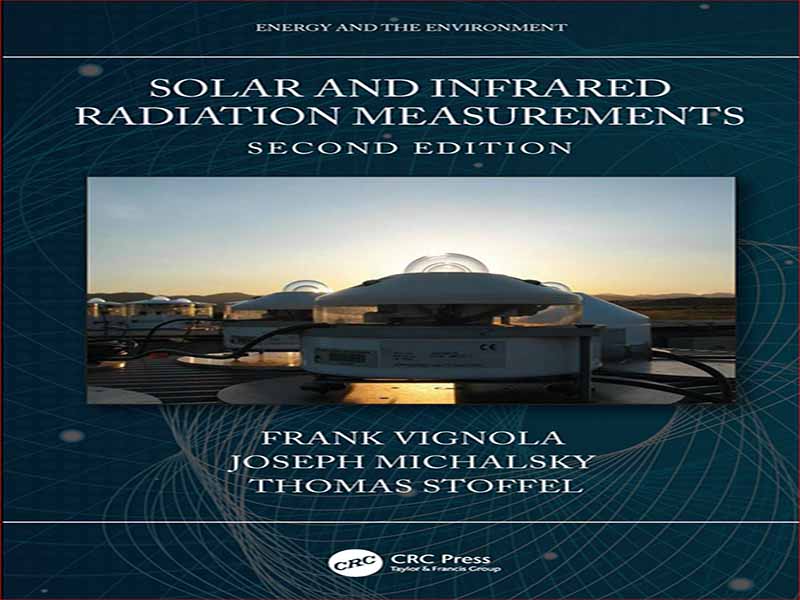- عنوان مجله: Solar and Infrared Radiation Measurements
- نویسنده: Abbas Ghassemi
- حوزه: َانرژی خورشیدی
- سال انتشار: 2021
- تعداد صفحه: 517
- زبان اصلی: انگلیسی
- نوع فایل: pdf
- حجم فایل: 43.5 مگابایت
اندازه گیری تابش خورشیدی مبنایی برای درک منبع انرژی اولیه زمین است. مطالعه خورشید و به کارگیری این درک، زندگی روی زمین را از آغاز تاریخ بهبود بخشیده است. سازندگان از دانش خود در مورد منابع خورشیدی برای گنجاندن نور روز و گرمایش فضا در سازه های خود از زمان شهرهای یونان، اگر نه زودتر، استفاده کرده اند. امروزه تاسیسات تولید خورشیدی با ظرفیت 500 مگاوات در حال بهره برداری هستند و تاسیسات بزرگتری نیز در دست ساخت هستند. بازار جهانی فتوولتائیک به نرخ رشد سالانه اخیر تقریباً 50 درصد رسیده است (IEA PVPS 2017). تا سال 2016، نصب تاسیسات با 402000 مگاوات اوج ظرفیت تولید خورشیدی در سطح جهان، تولید برق سالانه معادل 70 تا 80 نیروگاه زغال سنگ داشت (REN21 2018). جهان به خوبی برای عصر خورشیدی آماده می شود که در آن نفت تمام می شود و منابع انرژی بی خطر برای محیط زیست برای برآوردن نیازهای انرژی جهانی به طور پایدار مورد نیاز خواهد بود. امروزه طیف گسترده ای از فناوری های خورشیدی استفاده می شود و فناوری های جدید و بهبود یافته خورشیدی در آزمایشگاه در حال بررسی و آزمایش در این زمینه هستند. انرژی خورشید رایگان و در دسترس همه است، و فناوری هایی که تابش خورشیدی را به انرژی قابل استفاده تبدیل می کنند، با رشد صنعت خورشیدی و افزایش تولید، قیمتشان کاهش می یابد. با توجه به ساختار مالی مناسب، بسیاری از فناوری های خورشیدی می توانند بازارهای مقرون به صرفه ای پیدا کنند. به عنوان مثال، یک پروژه مقرون به صرفه برای جایگزینی لامپ های نفت سفید با پنل ها و باتری های فتوولتائیک (PV) در جمهوری دومینیکن موفقیت آمیز بود (Perlin 1999). از سال 1985، نیروگاه های تولید انرژی خورشیدی لوز (SEGS) در کالیفرنیا، با 354 مگاوات ظرفیت تولید، برق را از تاسیسات انرژی حرارتی-الکتریک خورشیدی تولید کرده اند (Kearney 1989؛ CEC 2018). آینده صنعت خورشیدی روشن است زیرا تأسیسات تولید انرژی پایدار برای برآوردن نیازهای انرژی برای جمعیت رو به رشد جهان و در عین حال کاهش اثرات مخرب انتشار گازهای گلخانه ای به کار گرفته می شوند.
Solar radiation measurements are the basis for understanding Earth’s primary energy source. Studying the sun and applying this understanding has improved life on Earth since the dawn of history. Builders have taken advantage of their knowledge of the solar resource to incorporate daylight and space heating into their structures since the time of Greek city states, if not earlier. Today, solar-generating facilities that are 500 MW in size are in operation and larger facilities are under construction. The global photovoltaic market reached recent annual growth rates of almost 50 percent (IEA PVPS 2017). By 2016, the installation of facilities with 402,000 MW of peak solar-generating capacity globally had the equivalent annual power output of 70–80 coal power plants (REN21 2018). The world is fitfully preparing for the solar age when oil will be depleted and environmentally benign sources of energy will be needed to meet global energy demands sustainably. Today a wide variety of solar technologies are used, and new and improved solar technologies are being explored in the lab and tested in the field. The sun’s energy is free and available to everyone, and the technologies that turn solar irradiance into useable energy are dropping in price as the solar industry grows and production increases. Given the right financial structure, many solar technologies can find cost-effective markets. For example, a cost-effective project to replace kerosene lamps with photovoltaic (PV) panels and batteries in the Dominican Republic was successful (Perlin 1999). Since 1985, the Luz Solar Energy Generation Stations (SEGS) plants in California, with 354 MW of generating capacity, have produced electricity from solar thermal–electric power facilities (Kearney 1989; CEC 2018). The future for the solar industry is bright as sustainable energy generating facilities are deployed to meet the energy demands for the growing world population while reducing the deleterious effects of greenhouse gas emissions.
این کتاب را میتوانید از لینک زیر بصورت رایگان دانلود کنید:




































نظرات کاربران